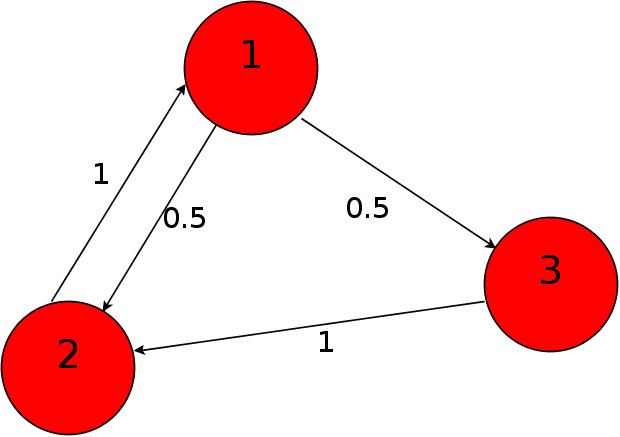 | ||
DeGroot learning refers to a rule-of-thumb type of social learning process. The idea was stated in its general form by the American statistician Morris H. DeGroot; antecedents were articulated by John R. P. French and Frank Harary. The model has been used in physics, computer science and most widely in the theory of social networks.
Contents
Setup and the learning process
Take a society of
Formally, the beliefs are updated in each period as
so the
Convergence of beliefs and consensus
An important question is whether beliefs converge to a limit and to each other in the long run. As the trust matrix is stochastic, standard results in Markov chain theory can be used to state conditions under which the limit
exists for any initial beliefs
Strongly connected case
If the social network graph (represented by the trust matrix) is strongly connected, convergence of beliefs is equivalent to each of the followings
entries sum to 1 such that, for every
for every
General case
It is not necessary to have a strongly connected social network to have convergent beliefs, however, the equality of limiting beliefs does not hold in general.
We say that a group of agents
Consensus
A group
With a strongly connected and aperiodic network the whole group reaches a consensus. In general, any strongly connected and closed group
Social influence
Take a strongly connected and aperiodic social network. In this case, the common limiting belief is determined by the initial beliefs through
where
The eigenvector property
This means that the influence of
Examples
These examples appear in Jackson (2008).
Convergence of beliefs
Consider a three-individual society with the following trust matrix:
Hence the first person weights the beliefs of the other two with equally, while the second listens only to the first, the third only to the second individual. For this social trust structure, the limit exists and equals
so the influence vector is
Non-convergent beliefs
If we change the previous example such that the third person also listens exclusively to the first one, we have the following trust matrix:
In this case for any
and
so
Asymptotic properties in large societies: wisdom
It is possible to examine the outcome of the DeGroot learning process in large societies, that is, in the
Let the subject on which people have opinions be a "true state"
where
A necessary and sufficient condition for wisdom can be given with the help of influence vectors. A sequence of societies is wise if and only if
that is, the society is wise precisely when even the most influential individual's influence vanishes in the large society limit. For further characterization and examples see Golub and Jackson (2010).
